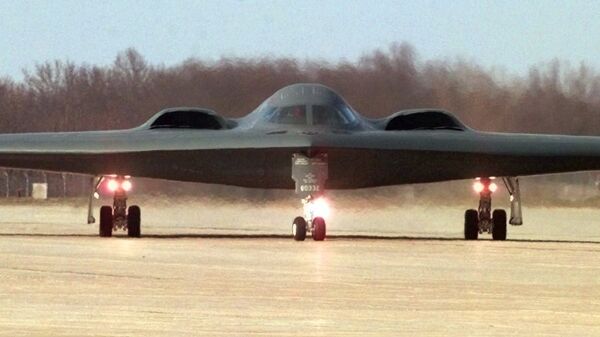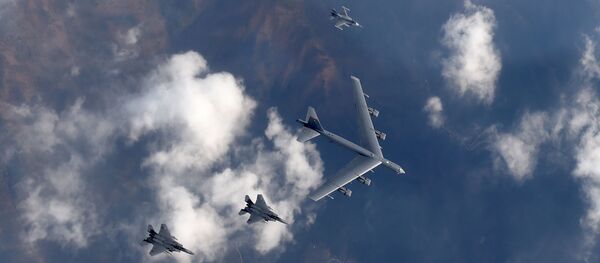The flight plan for the nuclear-equipped bomber has not been released by the US Strategic Command (STRATCOM) or the White House, although various US bases in the region, including those in South Korea and Japan, make up a short list for the long-range warplane to resupply.
The last documented time a B-2 visited the area was during a 2013 Pentagon promotional show-of-force tour over the Korean Peninsula, according to the Japan Times.
Flying to the Pacific area from its Missouri home at the Whiteman Air Force Base during the weekend, the B-2 — with a range of over 6000 miles — can be refueled in mid flight, making it possible for the aircraft to deliver a nuclear weapon anywhere on the planet.
STRATCOM downplayed the bomber overflight, stating that the globetrotting mission was routine, and was being conducted to "familiarize aircrew with air bases and operations in different geographic combatant commands, enabling them to maintain a high state of readiness and proficiency," cited by Japantimes.com.
The STRATCOM statement also included remarks intended to allay the fears of regional US allies Japan and South Korea ahead of Trump's visit, suggesting that the B-2 visit should be considered as "a visible demonstration of commitment to our allies and enhancing regional security."
Over the weekend US Defense Secretary James Mattis accused the People's Democratic Republic of Korea (DPRK) of engaging in "outlaw" activity, promising that Washington and its allies will never accept Pyongyang as a nuclear weapons-capable state.
"I cannot imagine a condition under which the United States would accept North Korea as a nuclear power," Mattis declared.
"North Korea has accelerated the threat that it poses to its neighbors and the world through its illegal and unnecessary missile and nuclear weapons programs," he stated, adding that recent developments — including a purported successful hydrogen bomb detonation by Pyongyang in September — have created "a new urgency" for the region.



